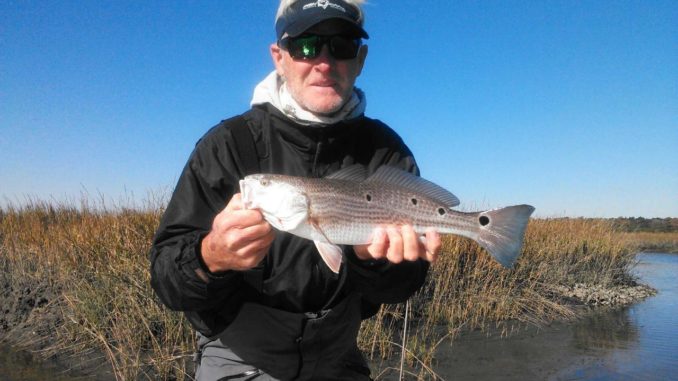
The saltwater for 30 miles on either side of the North Carolina-South Carolina state line are full of redfish year-round, and they’re ready to put winter behind them and start feeding this month.
Saltwater fishermen in both Carolinas have one stretch of water they should both be familiar with, especially when the winter doldrums begin to break up and the water begins to warm, when baitfish that have wintered in the warmer waters of marshes and creeks begin to stir.
And when that happens, redfish that winter in the protected waters around Little River Inlet, from Dunn Sound on the South Carolina side to Shallotte Inlet on the North Carolina side, also begin to stir.
This stirring of the saltwater pot typically begins in March, when days are getting long enough to notice. Daylight Savings Time begins on March 12, when an hour of daylight borrowed from the mornings and added to the afternoons that gives enough time for fishing trips after work when the sun has had all day to warm the waters.
Dunn Sound is a shallow, protected estuary at the northern end of the South Carolina coast. It begins behind the northern end of Cherry Grove Beach and connects to the ocean through Hog Inlet on one end and to Little River Inlet through several creeks between Little River Neck and Waites Island on the other.
North of the state line is a marsh estuary that extends from behind Little River Inlet to Jinks Creek, just west of the Ocean Isle Beach Causeway. North of the causeway are 20 canals, many with bottoms lined with concrete, and then Sasapan Creek before reaching Shallotte Inlet and the Shallotte River.
While this sounds like a long distance, it’s less than 10 miles and can be easily fished, even in a small skiff with a tiller outboard. A day of fishing is usually rewarding, too, as there is habitat and food for even the pickiest redfish. It isn’t a surprise to include black drum, speckled trout, and even an occasional flounder in a March catch.
The state line runs from just east of Little River Inlet across the marsh to just west of Calabash, N.C., and splits this area. However, Little River Inlet is in the Palmetto State, and it is a focal point of fishing. Guides in the area track fishing on both sides of the border and are licensed in both states.
Mark Dickson of Shallow Minded Fishing Charters in North Myrtle Beach, S.C., said spring fishing tries to break loose during March, but it’s all weather related. With a warm winter and early spring, the action can fire up early, but if the winter is cold and spring is slower to arrive, it won’t get going until later. The good news is that redfish stay around all winter and are usually one of the first fish to get fired up each spring.
Dickson puts the emphasis on food and water temperature for finding redfish, with food being the first priority. He looks for baitfish and fishes where he finds them: from docks along the creeks and Intracoastal Waterway to creeks and pools deep in the marsh.
“The reds are usually deeper in the marsh when the water is colder,” Dickson said. “The shallow pockets with dark, mud bottoms warm with the sunlight, and the reds seek out the pockets that are holding food. They will grub small crabs out of oyster rocks, plus eat a variety of shrimp, crabs, minnows and other smaller fish.
“Early on, I used an aluminum john boat with a tiller outboard to get deep in the marsh. It has a very shallow draft and held up well while I was finding sand and mud bars and having occasional altercations with oyster rocks. However, I found pockets of fish that weren’t being chased continually, and I have some customers now who come in February and March just to fish them.”
Dickson even occasionally gets out of the boat and walks to isolated, semi-landlocked pockets farther up the creeks. One cold and windy afternoon behind Bird Island, he stuffed his pockets with jigheads, soft plastics, and leaders and hiked about a half-mile beyond where his boat would float to a series of pockets that weren’t quite teeming with hungry redfish, but held more than enough to keep his clients focused on fishing.
Several bends up the creek, Dickson reached a 30- to 40-yard section that was deeper, but was bordered on both ends by shallows that were barely ankle-deep. A large oyster rock tapered into the pocket in two areas, and Dickson said those were the spots to concentrate on. He slipped Gulp shrimp and crabs on the jigheads and let his baits land and stay in place for 15 to 30 seconds, then moving them only a few inches before another sit on the bottom.
Dickson was explaining the scent of the Gulp baits would be a major part of attracting fish when the first one hit. The redfish was a freight train for the length of the pool but had to double back when it reached the shallow end. The fight lasted several minutes before the healthy fish allowed itself to be led to the bank. There wasn’t much time to be surprised as a second redfish struck while Dickson was removing the hook from the first.
Several more redfish were caught before the bite slowed, but a second pool was about a 100-yard hike farther up the creek, and filled with hungry redfish, a similar scenario played out. Most other pools visited held at least one red before the rising tide forced a hike back to the boat.
Mark Stacy of Ocean Isle Fishing Charters believes in working from the Intracoastal Waterway docks back into the marsh as the water warms during March. When they aren’t producing, he heads into the marsh, but he prefers to fish flooded marsh or marsh ponds, rather than follow creeks.
“The drum that are working their way into shallow marsh ponds are there to feed,” Stacy said. “They aren’t warm enough to be aggressive and tailing yet, but they’re looking for food. Some of these spots are so shallow, even the drum have to wait for the tide to rise a little to get in, but when they can, they move into the shallow water to look for crabs, shrimp and minnows, which are in the flooded grass to hide from predators like drum.”
Stacy doesn’t hesitate to use pieces of cut bait, shrimp or crab when the water is cool and fish aren’t very active. He said drum have the best noses in the marsh and use them to find food, especially when it isn’t plentiful. They can detect faint odors and follow them to the source, planning to eat.
“My favorite bait for late winter/early spring drum is pieces of crab,” he said. “I don’t know what it is, but drum seem to be able to smell crabs from a long ways away. The oil in crabs seems to spread through the water well, and it drives drum nuts. When they smell it, they come looking to eat.”
Stacy keeps his crabs alive until just before using them. He removes the shell and breaks them into pieces around each leg and their flippers. Stacy uses a rig with a short leader — a little heavier than he would use in open water — to help protect against getting cut on the sharp edges of the marsh grass. The rig looks similar to a Carolina rig, but he uses two 1/8-ounce split shot for weight, rather than a sliding egg sinker. A wide-bend circle hook holds the crab and is a good hook to snag the redfish around its lower jaw where it’s easy to remove.
It usually doesn’t take long for a redfish to cross the smell of the crab and follow it to the bait. They might take the bait slowly, but they turn into little bulls when they feel the hook. Rods are placed in holders and the first notice of a strike is usually a deeply bent rod or the squeal of a reel reluctantly giving up line.
Greg Holmes of Fish Skinny Charters in Little River, S.C. also fishes this area straddling the state line. He echoes the locations suggested by Dickson and Stacy and emphasizes the creeks and marsh just inside Tubbs Inlet, which has silted in and is no longer navigable.
Holmes fishes natural and live baits, but he offers the concern that mud minnows, which are the predominant live bait at this time of year, aren’t particularly active in the cooler water and tend to hunker down under oyster shells, which makes them difficult for even fish to spot. Holmes believes there are early spring days when lures will be more effective than live baits.
“We will usually have a lot of warm days during March, but the water is still cool, especially early in the month,” he said. “The fish will often still be in their winter mode and not be aggressive about feeding. Even though you might get warm from casting in the sun and take your jacket off, the water isn’t that warm, and you need to remember that.
“I like to downsize lures while the water is cool. I use a lot of soft plastics like Vudu and other shrimp shapes, and instead of the 4-inch bait I use in the fall, I drop down to 3-inch baits. I don’t know exactly why, but the fish respond to them better. Maybe because they are smaller, they look easier to catch.
“I also retrieve the lure very slowly,” Holmes said. “I like to hop the bait up and let it settle, rather than worrying about covering a lot of bottom. Sometimes you have to keep the bait in front of fish a little longer to convince them to bite.”
One lure that doesn’t seem to fit this idea is a spinnerbait, but Holmes said they work surprisingly well. He prefers spinnerbaits that have Colorado blades; they will spin at slower speeds and also put out a thump-like vibration that attracts fish, especially redfish.
DESTINATION INFORMATION
HOW TO GET THERE — The waters between Ocean Isle Beach, N.C. and Cherry Grove Beach, S.C. are best reached by US 17, which runs parallel to the coast and connects inland to US 501, US 378, SC 9, SC 22, SC 90, NC 904, NC 130 and NC 211. Free boat ramps are at Brick Landing on the ICW at the east end of Ocean Isle Beach, next to the Ocean Isle and the Sunset Beach bridges, at on both sides of the ICW at the US 17 bridge between Little River, S.C., and Cherry Grove.
WHEN TO GO — Redfish stay in these waters year-round, and after moving slowly during the winter, they become active as the water warms in March, when you may also run into an occasional speckled trout or black drum.
BEST TECHNIQUES — Light spinning tackle in the 6- to 16-pound range works well, matching 7-foot rods with 25000 to 4000 class reels spooled with 10- to 20-pound line. Braid is popular because of its sensitivity, and a short piece of 20-pound mono or fluorocarbon makes a good shock leader. Red drum have a great sense of smell and will find pieces of shrimp or cut bait fished on a Carolina rig with a No. 1 to 1/0 hook. They will also hit a variety of soft plastics fished on 1/8- to 1/4-ounce jigheads. Use the lightest jighead that will get the lure to the bottom.
FISHING INFO/GUIDES — Jimmy’s Marine, Ocean Isle Beach, N.C., 910-575-3600, www.jimmysmarine.com; Sportsman’s Choice Marine, Longs, S.C., 843-399-9283, www.sportsmanschoicemarine.com; Mark Dickson, Shallow Minded Charters, 843-458-3055, www.fishmyrtlebeach.com; Mark Stacy, Ocean Isle Fishing Charters, 910-279-0119, www.oceanislefishingcharters.com; Greg Holmes, Fish Skinny Charters, 843-241-0594, www.fishskinnycharters.com. See also Guides and Charters in Classifieds.
ACCOMMODATIONS — Ocean Isle Inn, 910-579-0750, www.oceanisleinn.com; Winds Beach Resort, 910-579-6275, www.thewinds.com; Harbourgate Marina and Condos, 843-249-8888, www.harbourgatemarina.com.
MAPS — Capt. Segull’s Nautical Charts, 888-473-4855, www.captainsegullcharts.com; Sealake Fishing Guides, 800-411-0185, www.thegoodspots.com; GMCO Waterproof Chartbook of North Carolina, 888-420-6277, www.gmcomaps.com.

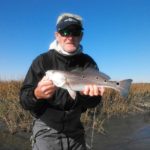
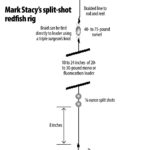
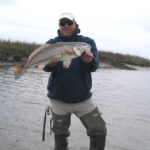
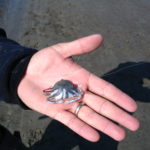



Be the first to comment